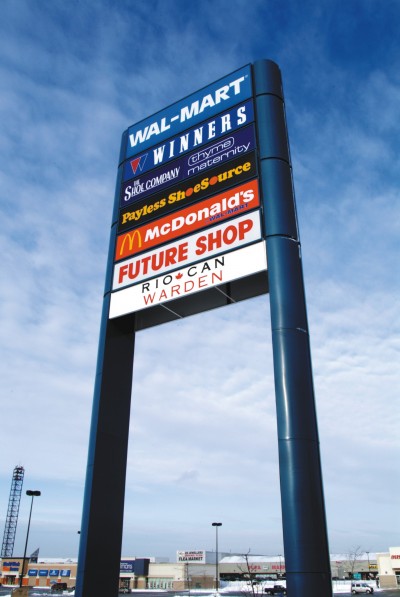NSREC reinforces business benefits of signage

Signage remains a vital component of many businesses’ success, according to several new studies released during the fifth annual National Signage Research & Education Conference (NSREC), which took place on October 9 and 10.
The event was sponsored by the Signage Foundation, in collaboration with the University of Cincinnati’s (UC’s) Colleges Design, Architecture, Art and Planning (DAAP) and Business, and hosted at the Kingsgate Marriott Hotel adjacent to the UC campus.
The new research showed, for example, retailers who added an electronic message centre (EMC) saw an increase in both the number of in-store transactions and overall sales. According to early results from UC researchers Michael Jones and Jeff Rexhausen, the initial boost averaged 2.55 per cent in sales and 2.6 per cent in transactions within a week of adding an EMC.
The same study also showed shoppers were more likely to notice an EMC. In all, 41 per cent said they had, compared to only 28 per cent who said they had noticed a ‘static’ sign.
Another consumer study showed how signs continue to play an important role in the changing media landscape. When asked if smart phones could eliminate the need for in-store signs, nearly 80 per cent of surveyed shoppers said no, while only six per cent said yes.
Consumers were also polled about what makes a sign hard to read. The following were some of the key factors they cited for negatively affecting legibility, some of which relate to city planners’ concerns:
- Letters are too small (83.3 per cent).
- Placement of sign makes it hard to see (71.4 per cent).
- Sign is not sufficiently illuminated at night (63.6 per cent).
- Letter colours do not stand out against background (60.3 per cent).
- Font is too fancy (47.8 per cent).
- Letters are spaced too closely together (35.6 per cent).
- Sign looks similar to others nearby (34.4 per cent).
The 2013 edition of NSREC also discussed community esthetics, sign regulations, public art, urban wayfinding and design and how to determine the value of a sign. The research presented during the two-day session will be made available in the coming weeks on the Signage Foundation’s website (www.thesignagefoundation.org).
Proposed research topics for 2014 include the economic value of illuminated signs, downtown development and a survey of how city planners perceive signs.


